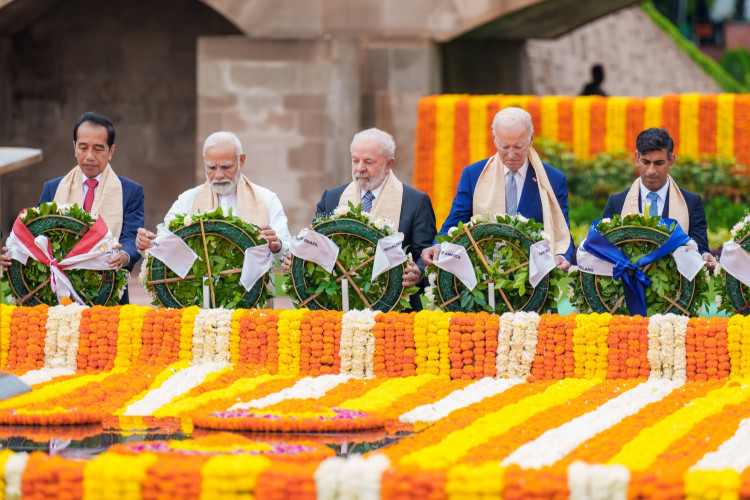At the recently concluded G20 summit, alongside the hard-fought joint declaration, a new transcontinental transport corridor project garnered significant attention.
On September 9, under the watchful eyes of participating leaders, the "India-Middle East-Europe Economic Corridor" (IMEC) was announced. This corridor, part of the plan, aims to connect Europe, the Middle East, and India through railways and sea routes. Participants include India, Saudi Arabia, the UAE, Jordan, Israel, Italy, France, Germany, and the European Union. Except for Jordan, the other eight have signed a memorandum of understanding.
The initiative aims not only to physically connect these regions but also to enhance digital connectivity, promoting trade in data, energy, and goods among the nations.
Beyond improving connectivity, it's noteworthy that IMEC includes Gulf Cooperation Council countries and Israel, traditionally at odds, potentially aiding the Biden administration's push for normalization of relations between Israel and Gulf nations.
A Modern "Spice Route"?
The IMEC is being touted as a modern "Spice Route", drawing parallels with the ancient "Silk Road" that connected East Asia and Roman Europe. The ancient "Spice Route" originated from spice-rich Southeast Asia, with Europe as its endpoint.
Indian Prime Minister Modi emphasized that India would act as a conduit for economic integration between West Asia and Europe. He described IMEC as a "beacon of cooperation, innovation, and mutual progress." President Biden characterized it as a "game-changing investment," predicting that in the coming decade, this corridor would become a frequent topic of discussion. European Commission President Ursula von der Leyen described it as more than just a railway line or undersea cable; it's a "green digital bridge spanning continents and civilizations."
Details about the IMEC's investment scale and construction timeline remain unclear. U.S. National Security Advisor Sullivan mentioned that a task force has been assigned to draft a comprehensive plan within the next 60 days, including specific infrastructure construction timelines.
Furthermore, Sullivan revealed that discussions about this project began during Biden's visit to Saudi Arabia last July. Meetings were held earlier this year to finalize agreements. According to Indian media, discussions about IMEC took place in Jeddah in May, led by the Saudi Crown Prince, with national security advisors from the U.S., India, and the UAE.
IMF Managing Director Kristalina Georgieva stated that while corridors and opportunities are essential for trade-driven growth, IMEC should be inclusive, serving the interests of all humanity.
In addition to India's "Spice Route", the U.S. also updated investment projects for other countries under the "Partnership for Global Infrastructure Investment" (PGII) framework during the G20 summit.
U.S. Global Infrastructure Ambitions
Broadly speaking, India's "Spice Route" is part of the U.S.-advocated "Partnership for Global Infrastructure Investment" (PGII).
First announced at the G7 summit in the UK in June 2021, the PGII was officially launched as a joint initiative at the 2022 G7 summit in Germany. The aim is to fund infrastructure projects in developing countries through public and private investments. Biden has expressed a goal to raise nearly $600 billion from G7 countries by 2027 for global key infrastructure investments.
Interestingly, the PGII has seen progress, to varying degrees, at every G20/G7 summit in recent years. Von der Leyen mentioned that the latest IMEC is another step in the PGII process.
However, the realization of the U.S.'s PGII ambitions depends on various factors. A Brookings Institution article from September last year compared the PGII and the "Belt and Road" initiative. The article concluded that if both initiatives can develop successfully, they will offer diverse choices for countries with infrastructure needs, resulting in a beneficial competition for all parties involved.






